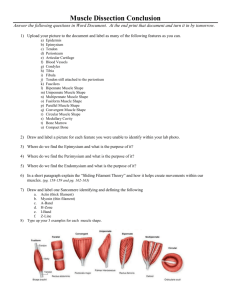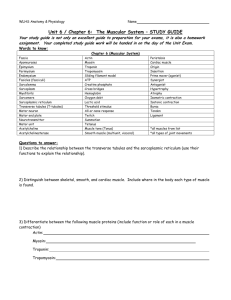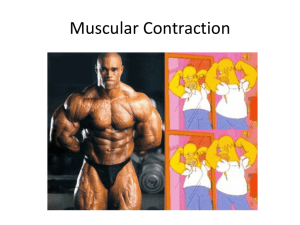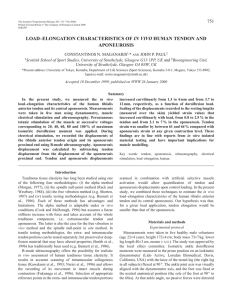Microscopic Anatomy & Organization of Skeletal Muscle
advertisement
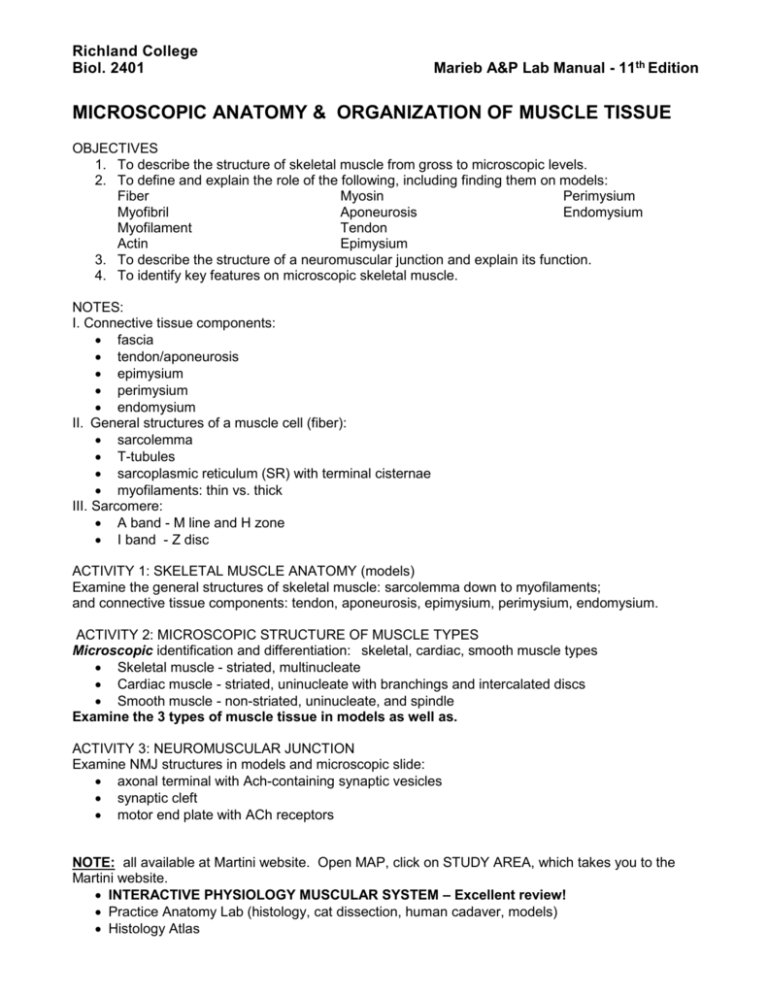
Richland College Biol. 2401 Marieb A&P Lab Manual - 11th Edition ACTIVITY 5: Audiometry MICROSCOPIC ANATOMY & ORGANIZATION OF MUSCLE TISSUE OBJECTIVES 1. To describe the structure of skeletal muscle from gross to microscopic levels. 2. To define and explain the role of the following, including finding them on models: Fiber Myosin Perimysium Myofibril Aponeurosis Endomysium Myofilament Tendon Actin Epimysium 3. To describe the structure of a neuromuscular junction and explain its function. 4. To identify key features on microscopic skeletal muscle. NOTES: I. Connective tissue components: fascia tendon/aponeurosis epimysium perimysium endomysium II. General structures of a muscle cell (fiber): sarcolemma T-tubules sarcoplasmic reticulum (SR) with terminal cisternae myofilaments: thin vs. thick III. Sarcomere: A band - M line and H zone I band - Z disc ACTIVITY 1: SKELETAL MUSCLE ANATOMY (models) Examine the general structures of skeletal muscle: sarcolemma down to myofilaments; and connective tissue components: tendon, aponeurosis, epimysium, perimysium, endomysium. ACTIVITY 2: MICROSCOPIC STRUCTURE OF MUSCLE TYPES Microscopic identification and differentiation: skeletal, cardiac, smooth muscle types Skeletal muscle - striated, multinucleate Cardiac muscle - striated, uninucleate with branchings and intercalated discs Smooth muscle - non-striated, uninucleate, and spindle Examine the 3 types of muscle tissue in models as well as. ACTIVITY 3: NEUROMUSCULAR JUNCTION Examine NMJ structures in models and microscopic slide: axonal terminal with Ach-containing synaptic vesicles synaptic cleft motor end plate with ACh receptors NOTE: all available at Martini website. Open MAP, click on STUDY AREA, which takes you to the Martini website. INTERACTIVE PHYSIOLOGY MUSCULAR SYSTEM – Excellent review! Practice Anatomy Lab (histology, cat dissection, human cadaver, models) Histology Atlas





